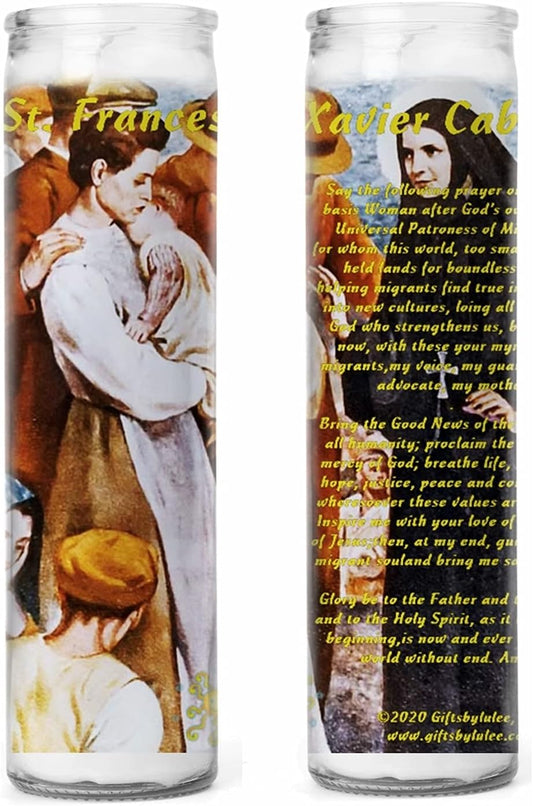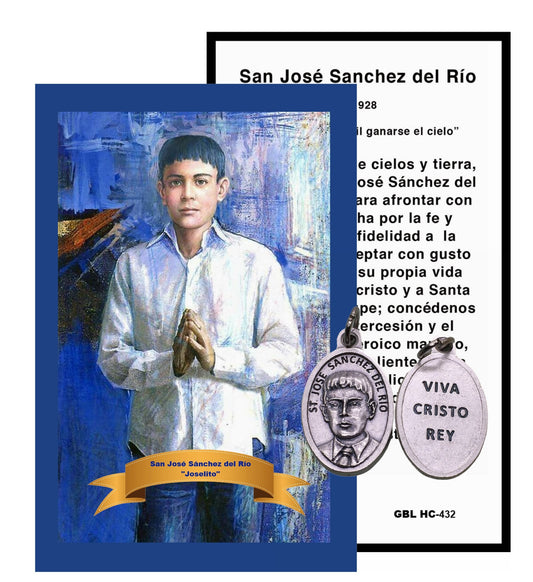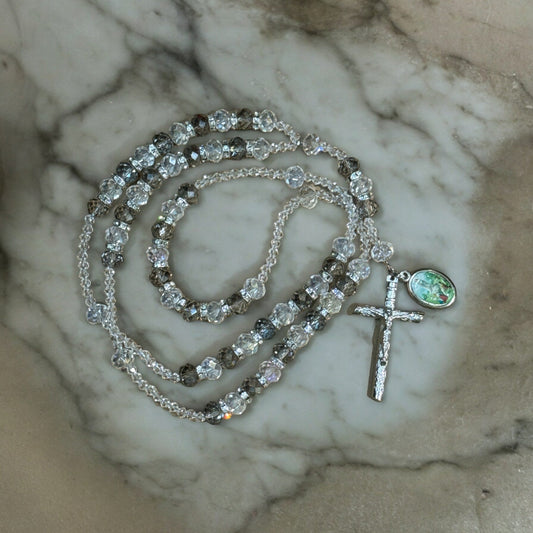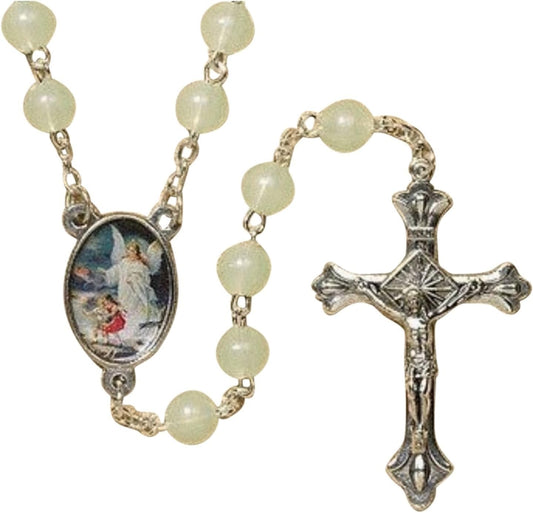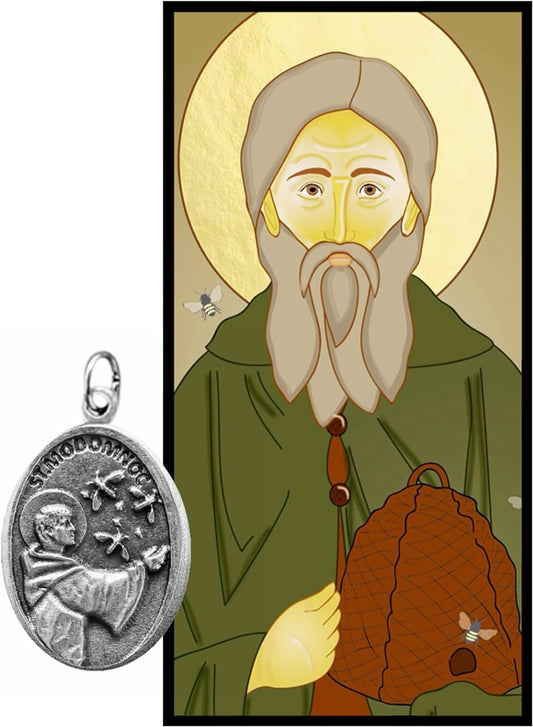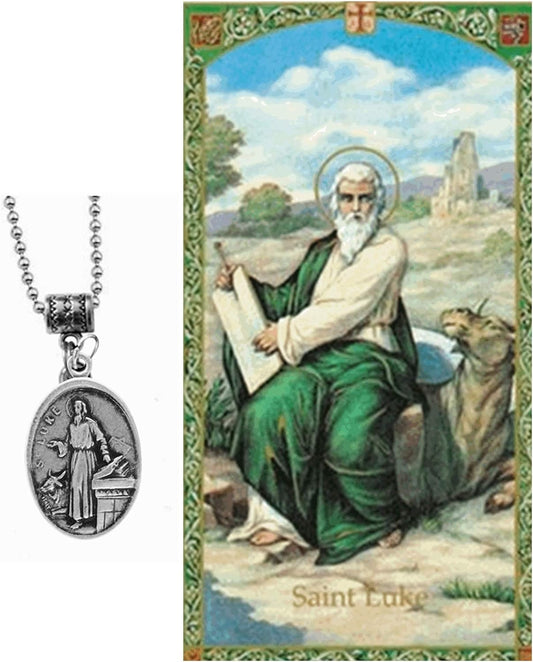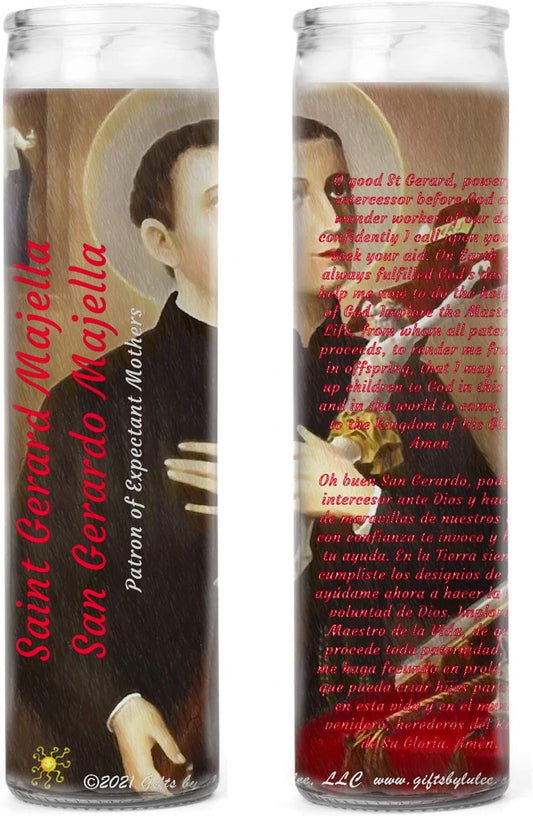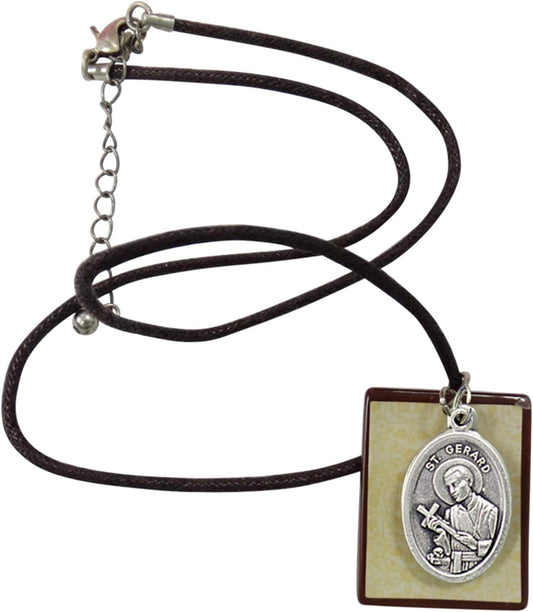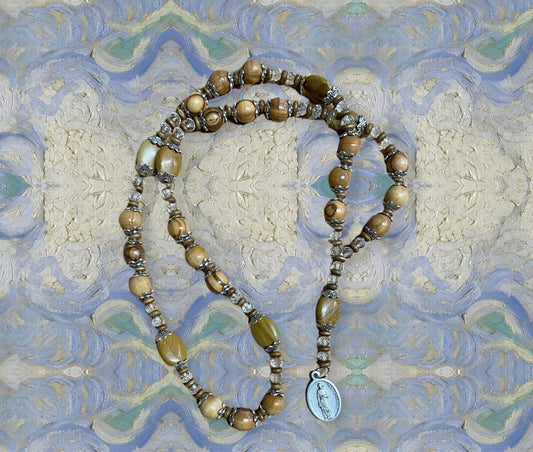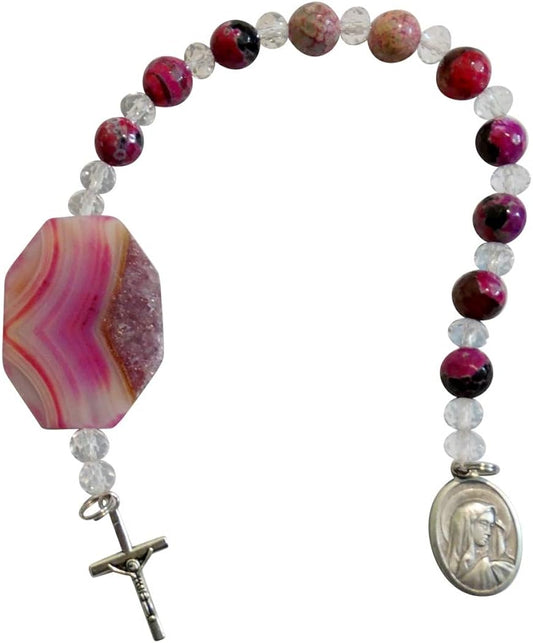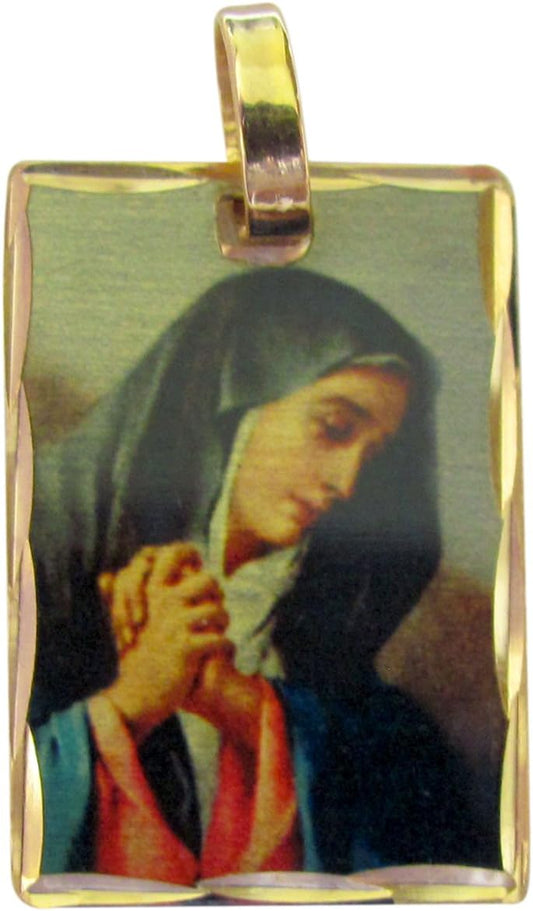Collection: Prayer Cards
- Prayer cards are small pocket-sized cards that usually depict a saint or symbolic Christian scene, such as Jesus on the cross. The back side of the card has a prayer that the owner of the card is encourage to recite.
-
While the specific history of prayer cards or holy cards varies by country, and even regions within countries, one is able to make some general statements on the history of holy cards. While the production of holy cards in their current form begins in the 1300s with the introduction of woodcuts, religious images as a form of teaching dates back even further. In 787, the Nicene Council wrote on their importance as a source of information on the life of Christ and other religious figures, as well as Christian lessons. However, very few examples of cards from the 1400s exist, and even cards from the 1500s and 1600s are rare. Clement VI began the trend of always carrying a holy card with the image of Christ on his person, a practice that still continues today. The Jesuits helped popularize the production of holy cards, seeing them as a way to spread the faith and counteract the Protestant Revolution.
The saints have always played a major role in Catholicism. They are often seen as mediators between humans and God, because of their past as a human who was closely linked to God. The lives of the saints are seen as something to emulate, due to their extreme holiness. Holy cards of saints often act as a way to help someone pray for the intercession of that saint. For this reason, holy cards of saints frequently depict them with something related to their patronages or ways of death.
-
Saint Frances Xavier Cabrini Mother Cabrini Set of Candles Silver Oxidized Medal Chain with Enhance Bale and Blessed Prayer Card together as a Set or Separate You Choose (2 Candles)
Regular price From $ 5.99 USDRegular priceUnit price / per$ 5.99 USDSale price From $ 5.99 USD -
San Jose Sanchez Del Rio Medalla - Tarjeta - Velas Veladoras Patron de Los Cristianos perseguidos, ninos, adolescentes Mexican Cristeros
Regular price From $ 4.99 USDRegular priceUnit price / per$ 5.00 USDSale price From $ 4.99 USDSale -
Our Lady of Fatima Handcrafted and exquisite Clear Crystal 10mm Beads Catholic Rosary Devotional Rosary for Our Lady of Fatima Devotees
Regular price $ 49.99 USDRegular priceUnit price / per$ 79.99 USDSale price $ 49.99 USDSale -
Guardian Angel Rosary Luminous Moulded Bead Rosary Silver Tone Centerpiece and Findings Includes a Blessed Prayer Card
Regular price $ 19.00 USDRegular priceUnit price / per$ 19.00 USDSale price $ 19.00 USD -
Holy Father Modomnoc of Ossory Patron Saint of Bees Silver Plated Medal with Prayer Card and Necklace sold separately or together as a set
Regular price From $ 5.99 USDRegular priceUnit price / per$ 5.00 USDSale price From $ 5.99 USD -
Sacred Heart of Jesus and Immaculate Heart of Mary Sagrado Corazon de Jesus Inmaculado Corazon de Maria Colgadera para auto Rear View Mirror or House Blessing Hanging Religious Charm
Regular price $ 14.99 USDRegular priceUnit price / per$ 12.00 USDSale price $ 14.99 USD -
Saint Luke the Evangelist Patron of Physicians Surgeons Health Professionals and Artists Blessed Prayer Card with or without a Medal with or without Necklace
Regular price From $ 4.99 USDRegular priceUnit price / per$ 4.00 USDSale price From $ 4.99 USD -
Saint Gerard Majella Prayer for Safe Delivery Set of 2 Candles with Blessed Prayer Card with Heat Sealed Medal or Only Candles
Regular price From $ 24.99 USDRegular priceUnit price / per$ 24.99 USDSale price From $ 24.99 USD -
Saint Gerard Majella Prayer of Thanksgiving for a Safe Delivery Blessed Laminated Italian Holy card with Gold Accents
Regular price $ 4.99 USDRegular priceUnit price / per$ 4.00 USDSale price $ 4.99 USD -
Saint Gerard Prayer for Safe Delivery Adjustable Brown Mariners Cord Necklace with Square Pendant and Silver Plated Medal with Matching Blessed Prayer Card
Regular price $ 19.99 USDRegular priceUnit price / per -
Saint Gerard Patron of Motherhood and Safe Delivery Wrap Style Rosary Glass Pearls and Silver Plated Findings dtone Findings Includes a Blessed Prayer Card
Regular price $ 22.99 USDRegular priceUnit price / per -
Christmas Tree Decoration Nativity Bell Ornament Set One Mary with Baby Jesus and One Joseph Porcelain and Prayer for Peace in The Family Prayer Card
Regular price $ 19.99 USDRegular priceUnit price / per -
Novena Prayer Seven Sorrows of the Blessed Virgin Mary Blessed Laminated Holy Card
Regular price $ 4.99 USDRegular priceUnit price / per -
St Joseph chaplet of Seven Sorrows and Seven joys Chaplet with a Saint Joseph Blessed prayer card Instructions
Regular price $ 69.00 USDRegular priceUnit price / per -
Our Lady of Sorrows Our Sorrowful Mother La Dolorosa Rain Flower Stone Beads Chaplet or Pocket Rosary Silver Plated Crucifix and Medal Includes a Laminated Blessed Prayer Card Imported fro Italy
Regular price $ 49.99 USDRegular priceUnit price / per -
14kt Overlay Medal of Our Lady of The Seven Sorrows - La Dolorosa Medalla, Oval
Regular price $ 24.99 USDRegular priceUnit price / per
